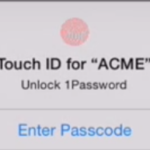
San Jose police discover that, yes, they did buy a drone
Barry Levine
If this was in a cop show, it might be called “The Case of the Missing Drone.”
In an epic back-and-forth with the Police Department of San Jose, Calif., Vice finally proved that, yes, the department had indeed bought a drone.
The department initially told Vice that it was unable to locate any documents about using federal grants to purchase a small, unmanned aerial vehicle (UAV), but eventually, it was able to track down the receipts and find the grant application that funded the purchase. (One would think that a Silicon Valley police department would have sufficient capability to electronically search for documents.)
“Law enforcement has natural uses for drone technology,” chief technologist Joe Hall of the Center for Democracy and Technology told VentureBeat. But, he added, “the inadequate response to the request for information is troubling, [since] the public needs to have a solid basis for trusting that law enforcement will use drones in a responsible manner.
“Shenigans like these do not inspire confidence.”
He also noted that, interestingly enough, Congresswoman Zoe Lofren (D-Calif.), whose district includes San Jose, has cosponsored a bill governing the use of drones by law enforcement agencies. The Congresswoman’s office has not responded to our request for comment.
The vehicle in question, a Century Neo 660 hexacopter drone, cost a bit less than $7,000 and arrived in January. Related purchases included a GoPro video camera and a video transmitter. But the new vehicle is apparently sitting in a police garage somewhere, since the department has not yet used it, trained anyone on it, or applied for Federal Aviation Administration permission to fly it.
In the partially redacted application to the Bay Area Urban Areas Security Initiative of the Department of Homeland Security, the San Jose police mention the need for a drone for its Bomb Squad. It noted that “the cost of these UAVs is 95 percent less than trying to purchase a new small bomb robot.”
The application additionally noted that “the UAV is truly regional in nature as it could be deployed at any venue in the Bay Area when needed” and added that the “UAV will greatly enhance our response capability.”
CDT’s Hall told us that “almost any function that a law enforcement entity performs with manned aircraft that can be performed by an unmanned vehicle like a drone will [eventually] be done in that manner,” because of cost and flexibility.
The San Jose department is not unique in having or wanting a small, unmanned flying machine. According to Ars Technica, police departments seeking FAA approval have included those in Houston; North Little Rock, Ark.; Miami-Dade, Fla.; and Seattle.
But, Hall added, “there are very few legal safeguards in place right now aimed at making sure surveillance is done responsibility with drone platforms.”
In addition to surveillance, there’s the question of safety. Matt Waite, the head of the University of Nebraska’s Drone Journalism Lab, has told VentureBeat that some models are, essentially, “flying lawnmowers,” and there have been instances of serious injury.
“Safety of these things is certainly an issue,” Electronic Frontier Foundation staff technologist Jeremy Gillula told us. “You’re not just tossing a soft Nerf ball up in the air.”
Crashed drone carried contraband aimed at South Carolina prison
HARRIET MCLEOD
(Reuters) – A drone being flown in a novel attempt to smuggle phones, marijuana and tobacco into a South Carolina maximum security prison crashed outside its walls, authorities said on Wednesday.
The contraband smuggling attempt has been under investigation since the wreckage was discovered in April outside the Lee Correctional Institution in Bishopville, said state Department of Corrections spokeswoman Stephanie Givens.
Officials believe it was the first time an unmanned aircraft had been used in an effort to breach prison walls in the state, Givens said. Most cell phones are thrown over walls.
“The technology is getting better, and we have to figure out different ways to fight back,” she said.
Illegal cell phones, an issue in prisons nationwide, have drawn particular alarm in South Carolina. In 2010, a cell phone smuggled into the same prison was used to order a hit on a prison officer, who was shot six times at his home but survived.
Authorities have arrested one man in the drone incident and are seeking another suspect. Brenton Lee Doyle, 28, appeared in court on Wednesday for a hearing. He faces charges of attempting to introduce contraband into a prison and possession of the drug flunitrazopam, a muscle relaxant known as “roofies.”
His case was continued until September.
Doyle has said he has never seen a drone and that police said nothing about a drone at the time of his arrest, his attorney Wayne Floyd said.
Authorities said the search for the second suspect continues.

AgileBits Shows Off 1Password Login Extension For iOS 8 Apps
Kyle Russell (@kylebrussell)
When Apple first showed off Touch ID on the iPhone 5s, everyone knew what it would eventually lead to: using your fingerprint to access anything secure on your iPhone, in any app. At WWDC last month, Apple finally announced that it was opening up the feature to all app developers. Now, AgileBits is showing how its 1Password app will combine Touch ID with iOS 8’s Extensions to let you securely log in to any app without having to save your credentials everywhere.
In a quick video on its blog, the company demonstrates how users will be able to use 1Password to quickly sign in to an app protected by one of its long, hard-to-crack passwords.
From the login screen, the 1Password Login extension can be reached with a quick swipe up to open Control Center. You press your thumb to Touch ID, and the extension automatically brings up the different accounts you’ve saved for that app. With another tap, the credentials are entered and you can sign in.
That’s a lot safer than simply staying logged in to all your apps. For apps that you don’t obsessively check and want to keep secure or private, the 1Password Login extension will be a nice compromise between speed and ease of use. AgileBits is hoping to get developers to integrate the extension in their apps by the time iOS 8 launches this fall, and has created a GitHub page with documentation and examples in order to make the process easier.
FCC Questions Verizon Plan to Throttle Some Unlimited Data Customers
Juli Clover
Federal Communications Commission Chairman Tom Wheeler today sent a letter [PDF via Gigaom] to Verizon Wireless, questioning its plan to throttle customers that have unlimited data plans during peak usage times. Verizon first announced its intention to throttle high-usage customers on grandfathered unlimited LTE plans last week.
In the letter, Wheeler says that he is “deeply troubled” by Verizon’s decision to throttle its unlimited users, as the company described its efforts as necessary for “Network Optimization.” Wheeler stated that he does not believe slowing the data speeds for select users falls under the “reasonable network management” umbrella.
“Reasonable network management” concerns the technical management of your network; it is not a loophole designed to enhance your revenue streams. It is disturbing to me that Verizon Wireless would base its “network management” on distinctions among its customers’ data plans, rather than on network architecture or technology.
Wheeler goes on to ask Verizon to answer a series of questions, requesting that the company explain its rationale for treating customers differently based on data plan type and questioning whether Verizon’s new throttling policy is justified under the FCC’s Open Internet rules. Wheeler also questions the necessity of cutting data speeds on the much more efficient 4G LTE network.
In a statement to The Wall Street Journal Verizon said that it would respond to the Chairman’s letter following a review of the content.
“We will officially respond to the Chairman’s letter once we have received and reviewed it,” Verizon Wireless said in a statement. “However, what we announced last week was a highly targeted and very limited network optimization effort, only targeting cell cites experiencing high demand. The purpose is to ensure there is capacity for everyone in those limited circumstances, and that high users don’t limit capacity for others.”
Verizon plans to begin throttling high-usage LTE customers accessing congested network cells beginning on October 1. The company says the change will only affect users with grandfathered unlimited plans not under contract who rank in the top five percent of data users.
At the time of its announcement, Verizon said that the top five percent consisted of customers who used 4.7GB of data each month, and those customers may experience slow data speeds “when using certain high bandwidth applications, such as streaming high-definition video or during real-time, online gaming” when connected to a cell site “experiencing heavy demand.”
Verizon has long restricted 3G data usage for unlimited users and it is something people seem to have just accepted. But it is likely that more and more customers will move to a different carrier, such as AT&T (https://att-bundles.com/wireless/) for example, now that Wheeler has spoken out against Verizon’s plans.

10 Apps That Will Make Your Android Phone A Whole Lot Better
LISA EADICICCO
One of the best things about Android is that you can change your phone’s theme, add new widgets, and customize your settings whichever way you please.
Android launchers allow you to make your phone even more personal and catered to your specific tastes.
A launcher is essentially a home screen replacement for your Android phone.
You can turn them on or off whenever you like, which means you can change the look and feel of your phone’s software at any time.
After playing with a bunch of lock and home screen replacements from the Google Play store, here are our top picks.
If you’re an avid Android user, your phone’s software is about to look a whole lot different in the next few months.
Google is billing the redesigned user interface as the key feature in its next major mobile software update, Android L.
With Android L, Google is introducing some aesthetic tweaks as part of its Material Design overhaul.
Material Design is a sleek, neat, and colorful new interface that’s meant to make the user experience seamless across devices on all screens – whether you’re using a smartwatch, phone, or tablet.
In addition to a leaner overall look, Material Design adds a few subtle nuances that make the Android experience seem more interactive and visually pleasing.
Google says it studied paper and ink to achieve the shadowed and textured look you’ll find in Android L.

The One-Horse Race: 85% Of The 300M Smartphones Shipped In Q2 Were Android
Ingrid Lunden @ingridlunden
Another milestone for Google’s Android in its unstoppable march to mobile dominance: the operating system accounted for 85% of all smartphones shipped in Q2 – its highest ever proportion, according to a new report from Strategy Analytics.
Google’s win comes at a loss for everyone else, and interestingly for the smartphone market overall. Apple, Windows Phone and BlackBerry all declined, and while there were nearly 300 million (295.2 million, to be exact) smartphone units shipped for sale in the quarter, smartphone growth has nearly halved compared to a year ago.
And it could come for a loss for Google, too – Android is likely to start getting investigated in Europe over its dominant position, according to a report in Reuters. An investigation could get triggered if Android is found to have more than 80% market share in the European market.
However, it looks like, for now, Google may still be clear of that. Strategy Analytics says that Android accounted for 73% of all smartphones shipped in Europe in Q2. A report from Kantar Worldpanel that was released earlier today noted that Android has a 74% share in Europe at the moment based on sales surveys (not shipments) that Kantar takes in five key markets in the region. In tablets, Android now stands at some 70% of all tablet shipments globally as well, too.
Strategy Analytics says that while smartphone sales continue to grow, it’s at a significantly slower rate than in the past. The 295 million units shipped in Q2 represents yearly growth of 27% compared to 49% a year ago. Why? In part, it’s because, while emerging markets are still growing strong, and have large populations, they are, at this point, still not making up for the slowing sales in more developed, large markets like Europe and the U.S. which came earlier to the smartphone craze.
Emerging markets mean more price pressure and consumers that may have significantly less disposable income, and think their very basic feature phones do a good enough job, apps or no apps.
“Global smartphone growth in the current quarter is at its lowest level for five years, and there are wide variations by region,” Linda Sui, a director at the research firm, notes in a statement. “Africa and Asia are booming, while North America and Europe are maturing.” Nevertheless, the changing tides have played squarely into Google’s hand. OEMs have been producing low-cost smartphones based on Android for years already, buoyed by the OS being free to license and the growing ecosystem of apps and services to use based on Android.
Yes, Microsoft has more recently also moved to make its Windows Phone platform free to license, and Nokia has been pushing low-cost Lumia smartphones for a while now, but this looks like it’s too little, too late: Strategy Analytics notes that Windows Phone share of shipments was only 3%, down from 4% a year ago, because of sluggish growth in the two huge, key markets of China and the U.S.
Indeed, a lot of the competitive fight has moved very much into the low end of the market. Apple and its iPhone, Strategy Analytics’ Woody Oh notes, also lost a percentage point “because of its limited presence at the lower end of the smartphone market.” Apple accounted for just under 12% of smartphone shipments (which is not the same as sales but is related in that it points to what retailers believe will be selling well, based on what has already sold well).
What we have shaping up, as research director Neil Mawston describes it, is effectively a one-horse race:
“Like the PC market, Android is on the verge of turning smartphone platforms into a one-horse race,” he writes.”Its low-cost services and user-friendly software remain wildly attractive to hardware makers, operators and consumers worldwide. Rival OS vendors are going to have to do something revolutionary to overturn Android’s huge lead in smartphone shipments.”
What could that revolutionary move be? Mawston believes Apple’s “push into the big-screen phablet market” and Mozilla’s continuing efforts in low-cost Firefox mobile devices “are the only major threats to Android’s continued growth at this stage.” Given that Firefox has yet to set the world on fire, and phablets are just larger screens but little more in the way of functionality, it seems like a pretty feeble fight, if that’s as revolutionary as it’s going to get.




